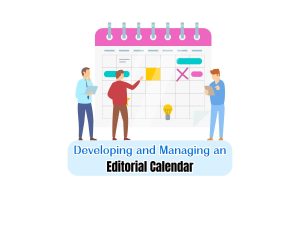
Exploring Advanced Techniques for Dealing with Content Duplication
Duplicate content refers to identical or similar content that appears on multiple URLs within a website or across different websites. While duplicate content is common
Technical writing is a unique niche that requires a balance between precision and clarity. The primary aim is to communicate complex concepts and instructions in a manner that a non-technical audience can understand and use effectively. In this blog, we will explore how to ensure clarity in technical writing and create user-friendly documents.
Technical writing often involves conveying complex, detailed, and specific information. The goal is not to water down the technical details, but to relay them in a way that is lucid and easy to comprehend, regardless of the reader’s expertise in the field.
Without clarity, even the most novel technologies or products can fail to reach their potential audience or end up being misused or misunderstood, leading to user frustration.
Identify the knowledge level of your audience and what they hope to gain from the document. Use a language and structure that aligns with their understanding, while still accurately communicating the necessary technical details.
Avoid jargon, acronyms, or complex technical terms wherever possible. If they must be used, ensure they’re clearly defined the first time they’re mentioned.
The active voice makes your writing more direct, clear, and concise. It formats sentences to show the subject performing the action, making it easier for readers to understand responsibilities or tasks.
Diagrams, flowcharts, and other visuals can be enormously beneficial in conveying technical concepts or processes. They illustrate the information concisely and engage various learning styles.
Present information in a logical, intuitive order. Using headings, sub-headings, bullet points, or numbered lists can make it easier for readers to follow along and understand the sequence of thoughts or steps.
Clarity often comes with revision. Once you’ve finished writing, review your work for any ambiguities or complicated sentences. Simplify your language and cut unnecessary words where you can.
Clear technical writing can significantly influence a product or technology’s user experience.
Users are able to understand and use the product more effectively.
It reduces the likelihood of misuse, which can lead to less technicals support or assistance needed.
It fosters greater trust and confidence in the product or service, enhancing user satisfaction.
Mastering the art of clarity in technical writing is a skill that can bridge the gap between complex specialist information and a positive user experience. By taking the time to understand your audience, using straightforward language, making use of visuals, and investing in thorough revisions, you can create specialist documents that are truly user-friendly. Remember, the goal is not to oversimplify, but to clarify – and that’s the art of technicals writing.

Duplicate content refers to identical or similar content that appears on multiple URLs within a website or across different websites. While duplicate content is common

In the dynamic world of content creation, organization and planning are key to maintaining consistency and effectiveness. An editorial calendar serves as the roadmap for





“LeadsView did an excellent job with my project and will definitely recommend. Easy to work with, flexible and good quality of work. I am more than happy to recommend them."




















Copyright 2023 © LeadsView. All Rights Reserved
